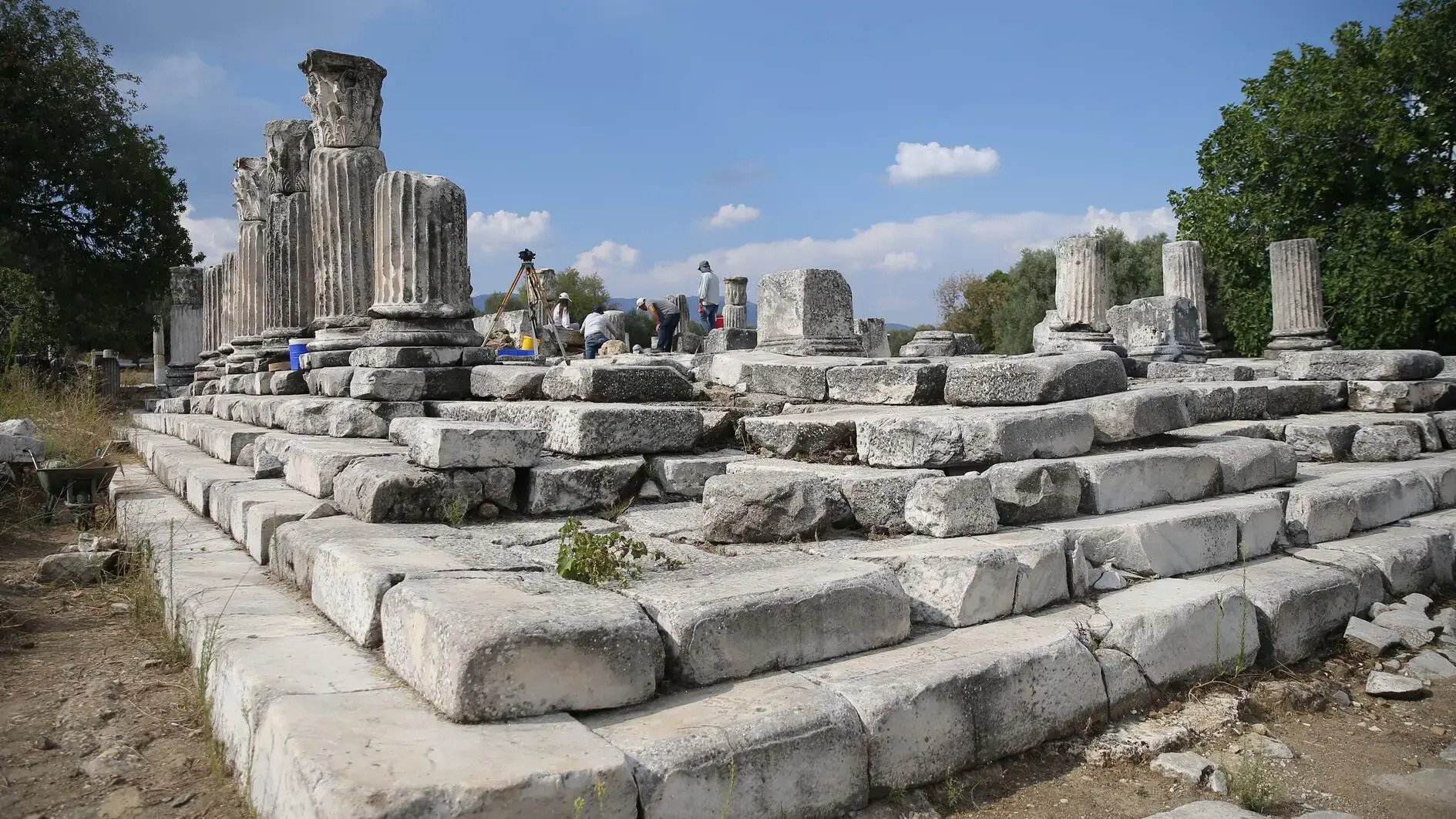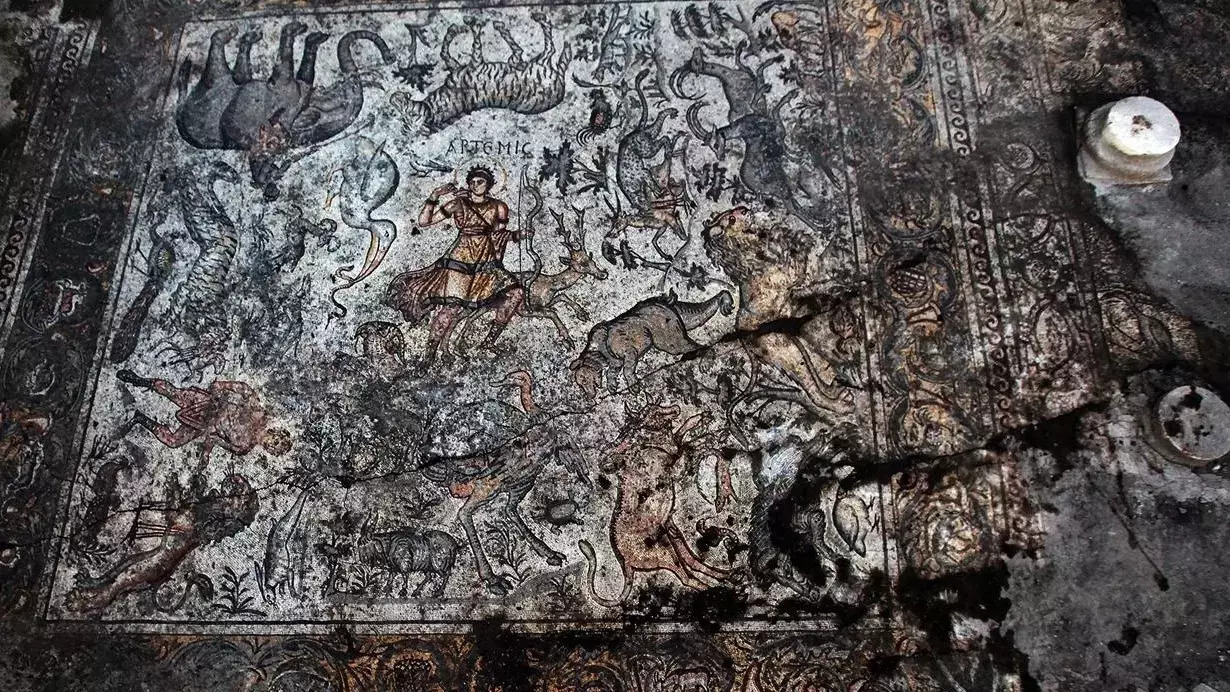Restoration work is underway at the 2,100-year-old Temple of Hecate in Lagina, a center of ancient pagan beliefs located in the southwestern province of Muğla.
Situated in the Yatağan district, the temple is dedicated to Hecate—the classical goddess of crossroads, doors, night, magic, witchcraft, and ghosts—and is currently being rebuilt. The upper structure of the columns surrounding the naos, the temple’s most sacred area, is being reerected. As blocks from the 2,100-year-old temple are uncovered, they are carefully placed back in their original positions.
Speaking to the state-run Anadolu news agency, Professor Bilal Söğüt, head of the Stratonikeia and Lagina excavations, explained that excavation, restoration, and drawing work at Lagina is conducted year-round.
Söğüt emphasized the importance of Lagina, one of two religious centers of the ancient city of Stratonikeia, due to its temple dedicated to Hecate. He noted that this is the largest known sacred area from the ancient period devoted to the goddess.
“This is one of the first sites where Ottoman archaeologist Osman Hamdi Bey conducted excavations in Western Anatolia during the Ottoman era. He worked here on behalf of the Ottoman Empire in 1891-1892. We are currently performing both excavation and drawing work at the temple, as well as temporary anastylosis [the reconstruction of a structure from blocks discovered during excavations without adding new elements] on the temple’s upper structure. This has provided us with a better understanding of ancient architecture and the processes of such an important cultural center,” Söğüt said.









